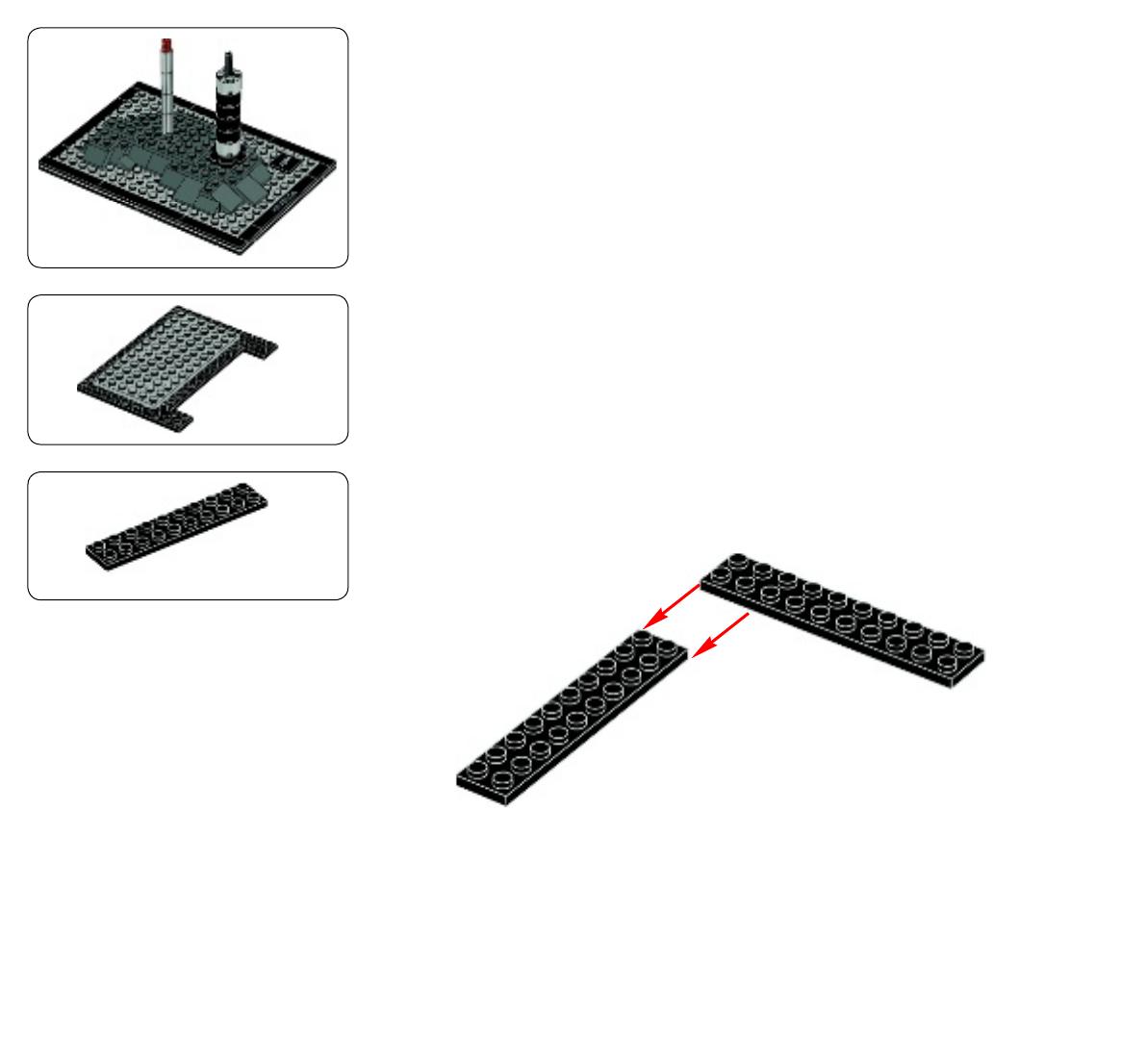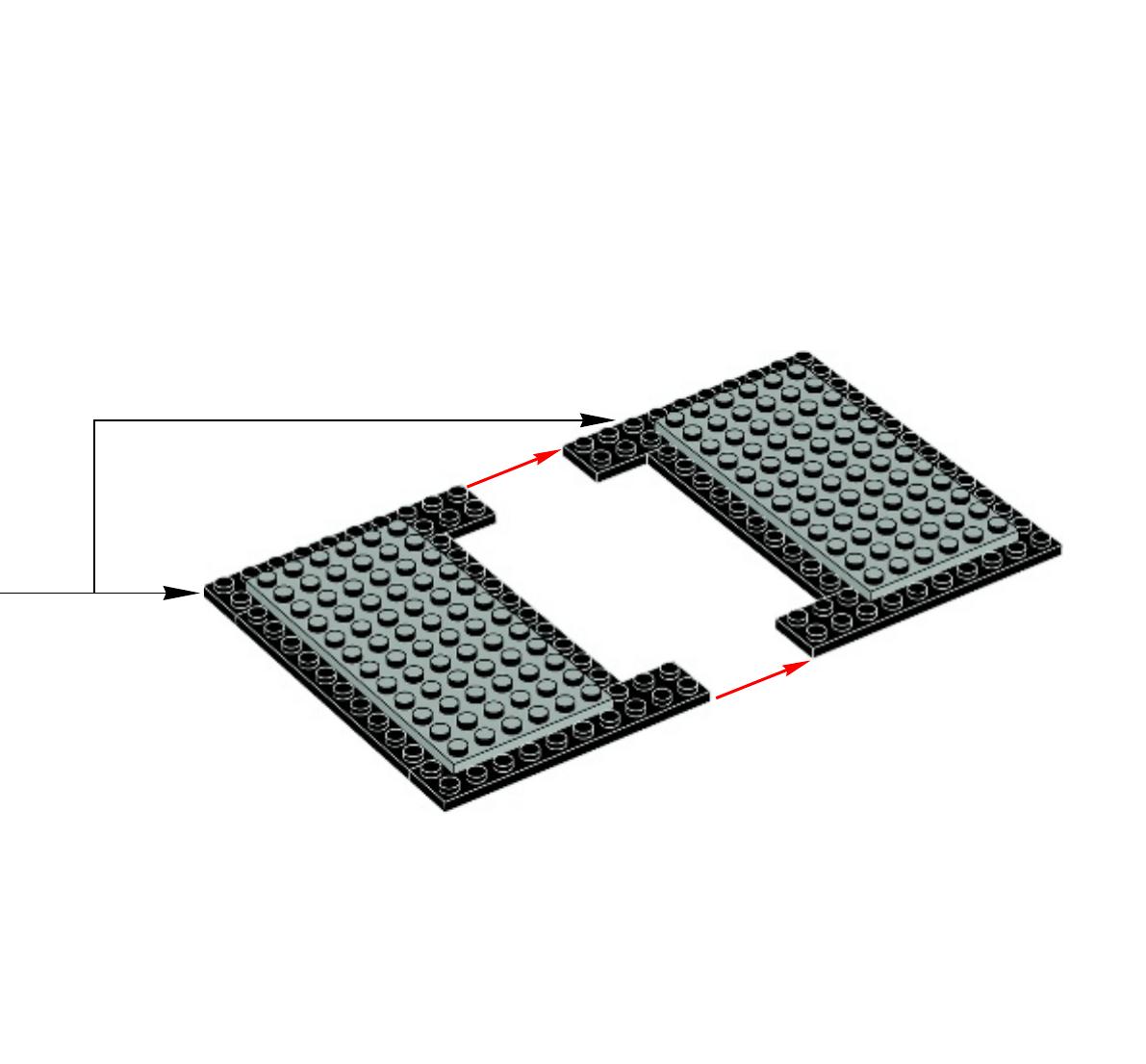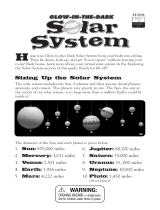Lego 21101 Ideas Building Instructions
- Category
- LEGO
- Type
- Building Instructions
This manual is also suitable for

1
1
chosen by more than 1,000 CUUSOO
users in Japan
Booklet available in English on
Heft in deutscher Sprache erhältlich auf
Livret disponible en français sur
Folleto disponible en español en
Folheto disponível em português em
A füzet magyarul ezen a honlapon olvasható
LEGO.CUUSOO.com
21101_BI.indd 1 14/11/2011 4:06 PM

2
INDeX
4 ............................................................................................................... About JAXA
5 .........................................................................Asteroid explorer HAYABUSA
6 ...................................................................................................The solar system
8 .........................................................................................................................Mission
8 ......................................................................................................................Samples
9 ...................................................................................... The asteroid ITOKAWA
11 .............................................................................................................. The voyage
12 .............................................................. Project Manager J. KAWAGUCHI
13 ........................................................................................ Building Instructions
86 .....................................................................................A word from DAISUKE
87 ........................................................................... From idea to fi nal product
88 ..................................................................................About LEGO
®
CUUSOO
86
87
88
21101_BI.indd 2 14/11/2011 3:17 PM

3
3
AN INcReDIbLe JOuRNeY
When the Hayabusa spacecraft successfully returned to Earth
on 13 June 2010, it was carrying a unique and precious cargo –
particles of dust from the surface of an asteroid. The seven-year
mission, carried out by the Japan Aerospace Exploration Agency
(JAXA), is not only one of the greatest technological feats of mod-
ern times, it has also given us new and invaluable insights into the
birth and evolution of our solar system.
3
21101_BI.indd 3 14/11/2011 3:17 PM

4
4
The Japan Aerospace Exploration Agency (JAXA) is Japan’s
national aerospace agency. It was created in 2003, when three
separate organizations merged into a single institution to com-
bine advanced research and technological development with the
launch of satellites and spacecraft into space.
Under the motto of “Reaching for the skies, exploring space”,
JAXA continues to challenge unknown and unexplored frontiers,
striving to succeed with its wide range of research and develop-
ment missions in order to contribute to the overall peace and
happiness of humankind.
AbOut JAXA
21101_BI.indd 4 14/11/2011 3:17 PM

5
AsteROID
eXPLOReR
hAYAbusA
The technological challenges facing the Hayabusa mission were
immense. It would be the fi rst spacecraft deliberately designed to
make contact with the surface of an asteroid in order to gather physi-
cal soil samples for analysis back on Earth. As the distances were
great and little was known about the asteroid on which it would land,
Hayabusa, which means falcon in Japanese, created new standards
for space technology in the areas of ion engines, autonomous con-
trol and optical navigation
Launch date: 9th May 2003
Re-entry date: 13th June 2010
Weight: 510 kg (including propellant)
Full width: 6 m
Main body: 1.0m x 1.1m x 1.6m (Hexahedron)
Main engine: Ion engines (microwave-discharge type)
Propellant: Xenon, Hydrazine, Dinitrogen tetroxide
Velocity at re-entry: 12km/sec
Traveling distance: 6 billion km
AsteROID
eXPLOReR
hAYAbusA
FActs
5
21101_BI.indd 5 14/11/2011 3:17 PM

6
Itokawa
Earth Mars
Moon
VenusMercury
Sun
Jupiter Saturn Uranus Neptune
Pluto
Asteroid belt
the sOLAR sYsteM
Around 4.5 billion years ago, our solar system was born from a massive cosmic dust cloud. Our own planet, Earth, the third in the solar system, became a life-friendly
planet. Humankind has always gazed at the stars, later observing the diff erent planets through telescopes. Eventually, advanced technology allowed us to send space
probes for on-sight observation of celestial bodies. Huge telescopes also enabled us to discover whole new worlds and revolutionized our understanding of what a
planetary system is. Though we may sometimes think modern technology has solved most of the mysteries of space and humankind, the exploration of the origin of
life and the universe has only just begun.
21101_BI.indd 6 14/11/2011 3:17 PM

7
Itokawa
Earth Mars
Moon
VenusMercury
Sun
Jupiter Saturn Uranus Neptune
Pluto
Asteroid belt
©JAXA/NASA
21101_BI.indd 7 14/11/2011 3:17 PM

8
Before the Hayabusa mission, the Moon was the only astronomi-
cal body from which physical samples of the surface had been
gathered. But, since the Moon has changed greatly over time due
to thermal processes, these samples could tell us little about the
origins of our solar system. Asteroids, being smaller, were thought
to contain a more pristine record of the planet-forming era. If a
soil sample could be obtained from the surface of an asteroid, it
could provide new clues about the fi rst stages of a solar nebula
and the raw materials that formed planets. This became the goal
of the Hayabusa mission.
More than 1500 individual particles of dust from the surface of
Itokawa were found in the capsule of Hayabusa when it returned
to Earth – the largest only 0,3 mm in size.
Detailed analysis has shown components such as olivine,
pyroxene, plagioclase and iron sulfi de were present. Researchers
now believe Itokawa was formed immediately after the birth of the
solar system 4.5 billion years ago, when celestial bodies, such as
the smaller asteroids, collided together.
MIssION sAMPLes
21101_BI.indd 8 14/11/2011 3:17 PM

9
The asteroid Itokawa is one of the near-earth objects orbiting between Earth
and Mars. It was discovered in 1998 and later named 25143 Itokawa after the
pioneering Japanese rocket scientist, Dr. Hideo Itokawa.
Relatively small in size, Itokawa measures only 535m x 294m x 209m and has
an irregular shape. While some parts of its surface are rough and rock-strewn,
others are smooth and more even. Analysis of the dust particles collected by
Hayabusa show they have been there for a few million years. Tests also sug-
gest that Itokawa is probably made up of interior fragments of a larger asteroid
that broke apart.
Prominent regions on the surface of Itokawa were given place names related
to the Hayabusa project.
the AsteROID
ItOKAWA
21101_BI.indd 9 14/11/2011 3:17 PM

10
Departure /
Touchdown to the surface of Itokawa /
Shadow of Hayabusa on Itokawa / Re-entry of Hayabusa /
21101_BI.indd 10 14/11/2011 4:16 PM

11
the VOYAGe
Hayabusa’s voyage started on 9 May 2003 when it was launched from the
Kagoshima Space Center (now known as the Uchinoura Space Center).
The spacecraft’s main engines are four ion engines with the acceleration
power as weak as a sigh, but with excellent fuel efficiency. The ion engines
worked near-continuously for two years, slowly propelling the spacecraft
toward its rendezvous with the Itokawa asteroid in mid-September 2005.
On the way, Hayabusa also experienced a gravity assist from Earth.
Hayabusa surveyed the asteroid surface from a distance of about 20 km,
before carefully approaching the surface for the collection of samples. This
was a critical moment for the mission because the long communication
delay prohibited Earth-based real-time commanding and Hayabusa had to
utilize its own autonomous navigation capabilities.
On 20 November 2005, the first attempt was made to land. However,
a sensor detected an obstacle during the autonomous navigation,
destabilizing Hayabusa’s attitude. After bounding bouncing a few times on
the surface, Hayabusa finally landed, and sat at a leaning attitude for about
30 minutes. Six days later the second landing operation was successful
as planned. However, it was revealed that no pellets to crash the surface
had been fired, but there was a probability that some dust may have been
kicked up into the sampling horn by the landing impacts.
After that, Hayabusa experienced a number of problems. A series of
communication glitches led to the control center losing all contact with
Hayabusa for six long weeks, and would eventually add three extra years to
the journey home. On the way, all but one of the four ion engines would fail
and the team had to rig parts of two of the failed engines to work together
and act as a single engine.
Through all these mishaps the scientists and engineers in the team worked
together to find creative solutions that allowed the mission to continue. On
13 June 2010, Hayabusa finally made it home - complete with its precious
cargo - ending one of the most spectacular voyages in the history of space
exploration.
21101_BI.indd 11 14/11/2011 3:17 PM

12
12
A new era in space research has come. Hayabusa aimed to be
the world’s fi rst round trip to a solar object including a surface
landing. This project ushered in a new age of space explora-
tion where samples and resources from other solar objects
can be transported back to Earth. I envision in the future that
Deep Space Ports will be constructed where spaceships can
be anchored for refueling and refurbishment before setting
off again on longer and longer journeys. Go and create new
spaceships based on the Hayabusa spacecraft.
PROJect
MANAGeR
J. KAWAGuchI
Project manager J. KAWAGUCHI
21101_BI.indd 12 14/11/2011 3:17 PM

13
21101_BI.indd 13 14/11/2011 3:17 PM

14
2x
2x
1
21101_BI.indd 14 14/11/2011 3:17 PM

15
1x
2
21101_BI.indd 15 14/11/2011 3:17 PM

16
1x
3
1x
4
2x
21101_BI.indd 16 14/11/2011 3:17 PM

17
5
21101_BI.indd 17 14/11/2011 3:17 PM

18
1x
6
21101_BI.indd 18 14/11/2011 3:17 PM

19
4x 4x
7
1:1
21101_BI.indd 19 14/11/2011 3:17 PM

20
4x
8
1:1
21101_BI.indd 20 14/11/2011 3:17 PM
Page is loading ...
Page is loading ...
Page is loading ...
Page is loading ...
Page is loading ...
Page is loading ...
Page is loading ...
Page is loading ...
Page is loading ...
Page is loading ...
Page is loading ...
Page is loading ...
Page is loading ...
Page is loading ...
Page is loading ...
Page is loading ...
Page is loading ...
Page is loading ...
Page is loading ...
Page is loading ...
Page is loading ...
Page is loading ...
Page is loading ...
Page is loading ...
Page is loading ...
Page is loading ...
Page is loading ...
Page is loading ...
Page is loading ...
Page is loading ...
Page is loading ...
Page is loading ...
Page is loading ...
Page is loading ...
Page is loading ...
Page is loading ...
Page is loading ...
Page is loading ...
Page is loading ...
Page is loading ...
Page is loading ...
Page is loading ...
Page is loading ...
Page is loading ...
Page is loading ...
Page is loading ...
Page is loading ...
Page is loading ...
Page is loading ...
Page is loading ...
Page is loading ...
Page is loading ...
Page is loading ...
Page is loading ...
Page is loading ...
Page is loading ...
Page is loading ...
Page is loading ...
Page is loading ...
Page is loading ...
Page is loading ...
Page is loading ...
Page is loading ...
Page is loading ...
Page is loading ...
Page is loading ...
Page is loading ...
Page is loading ...
Page is loading ...
Page is loading ...
Page is loading ...
Page is loading ...
-
 1
1
-
 2
2
-
 3
3
-
 4
4
-
 5
5
-
 6
6
-
 7
7
-
 8
8
-
 9
9
-
 10
10
-
 11
11
-
 12
12
-
 13
13
-
 14
14
-
 15
15
-
 16
16
-
 17
17
-
 18
18
-
 19
19
-
 20
20
-
 21
21
-
 22
22
-
 23
23
-
 24
24
-
 25
25
-
 26
26
-
 27
27
-
 28
28
-
 29
29
-
 30
30
-
 31
31
-
 32
32
-
 33
33
-
 34
34
-
 35
35
-
 36
36
-
 37
37
-
 38
38
-
 39
39
-
 40
40
-
 41
41
-
 42
42
-
 43
43
-
 44
44
-
 45
45
-
 46
46
-
 47
47
-
 48
48
-
 49
49
-
 50
50
-
 51
51
-
 52
52
-
 53
53
-
 54
54
-
 55
55
-
 56
56
-
 57
57
-
 58
58
-
 59
59
-
 60
60
-
 61
61
-
 62
62
-
 63
63
-
 64
64
-
 65
65
-
 66
66
-
 67
67
-
 68
68
-
 69
69
-
 70
70
-
 71
71
-
 72
72
-
 73
73
-
 74
74
-
 75
75
-
 76
76
-
 77
77
-
 78
78
-
 79
79
-
 80
80
-
 81
81
-
 82
82
-
 83
83
-
 84
84
-
 85
85
-
 86
86
-
 87
87
-
 88
88
-
 89
89
-
 90
90
-
 91
91
-
 92
92
Lego 21101 Ideas Building Instructions
- Category
- LEGO
- Type
- Building Instructions
- This manual is also suitable for
Ask a question and I''ll find the answer in the document
Finding information in a document is now easier with AI
Related papers
-
Lego 8909 MiniFigures Building Instruction
-
Lego 60229 Building Instruction
-
Lego 60228 City Building Instruction
-
Lego 60228 City Building Instruction
-
Lego 60271 City Building Instructions
-
Lego 60228 City Building Instruction
-
Lego 30365 Building Instruction
-
Lego 60271 City Building Instructions
-
Lego 71009 MiniFigures Building Instruction
Other documents
-
Silverlit 80332 User manual
-
 Educational Insights GeoSafari® Glow-in-the-Dark Solar System Product Instructions
Educational Insights GeoSafari® Glow-in-the-Dark Solar System Product Instructions
-
 Enabling Devices 1049W User manual
Enabling Devices 1049W User manual
-
Sharper Image Crackled Glass Solar Gazing Ball Owner's manual
-
Estes 2161 Operating instructions
-
Elenco EDU37113 Owner's manual
-
 Pioneering Tech PTI STS Installation guide
Pioneering Tech PTI STS Installation guide
-
Atari CX-2600 Flashback 2 User manual
-
Hasbro Casteroid Blaster Operating instructions
-
LIGHT MY BRICKS 42158 Operating instructions






























































































